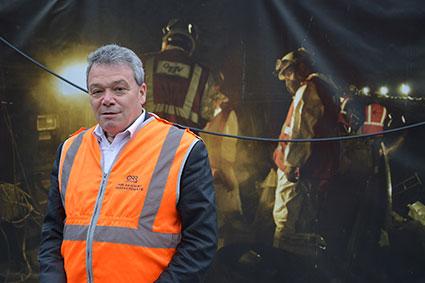Content archived on 20 April 2025

With this level of growth and success come inherent safety challenges in managing the increased rail traffic, not just in the moving of more trains, but also ensuring the safety of an increasing number of passengers on their journey through stations and while getting on and off trains.
The Office of Rail Regulation's (ORR) recently published annual safety report warned the rail industry of safety challenges in managing record levels of rail traffic and called for better infrastructure management. Although Britain's railways remain amongst the safest in Europe, latest data shows an increase in track workers coming to harm and safety incidents on platforms, such as when passengers get on and off trains.
Our report combines an in-depth analysis of the statistical trends with a lot of insight from our team of inspectors and their on-the-ground knowledge. Let's not forget that Britain's railways continue to report the best safety record in Europe, particularly for passengers on trains and at level crossings. In fact, we are ranked best at managing passenger and level crossing safety, and amongst the best at managing employee and public safety.
However, despite this success, I'm keen to ensure there is no room for complacency. Our report highlights that Network Rail must improve its management of the network so that it predicts and prevents problems before they create a safety risk or cause disruption for passengers. In the past year, ORR's inspectors have taken enforcement action to address serious issues which impact on safety, including earthworks which were too overgrown to be inspected, and increases in repeat track twist faults.
The industry has worked hard to make platforms safer for passengers, but overall harm to people at the platform train interface has increased. There were four fatalities and over 1,250 other platform related injuries in 2013-14. Safely managing crowd congestion is therefore crucial – on a network that clocked up 1.5 billion passenger journeys last year – particularly during service disruptions and temporary construction works.
Our report also shows that workforce safety continues to be a significant challenge for the industry. The trend in track workers being injured increased to its highest level in seven years, with 79 workers suffering major injuries and 1,641 reported minor injuries. There were also three rail worker fatalities during the past year, subject to ORR's on-going investigations. As the safety regulator, we want to see better protection for those who are vital to keeping the railway running. ORR wants to see rapid progress across the industry to introduce new technology and reduce risks and protect workers. This is why we have approved more than £250m in funding to improve protection and warning systems for track workers.
At ORR, we believe that a proactive approach to managing risk on railways is both the safest and most efficient way of working. We'll be working with the rail industry to improve its safety management and culture so that it 'predicts and prevents' safety risks and protects the safety of all those travelling or working on Britain's railways.
Our on-going programme of targeted inspections will focus on station management, electrical and worker safety, level crossings and the condition of tracks, bridges and tunnels, to ensure that there is no compromise on safety. We have also approved dedicated funding for the next five years to improve the safety and performance of Britain's railways, £100m has been made available to close level crossings.
If you'd like to know more about our findings or read the report in full, visit: https://orr.gov.uk/publications/reports/health-and-safety/health-and-safety-annual-report-2014

